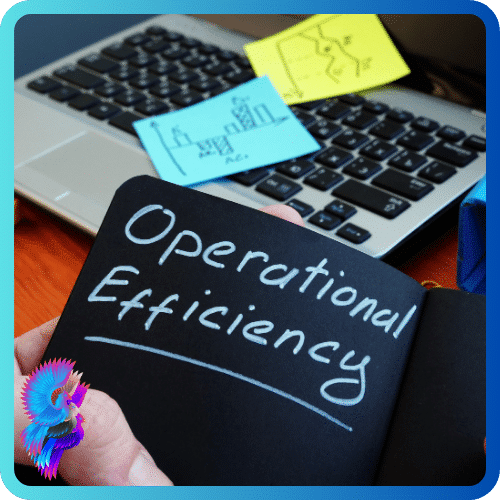Advertisements
Strategic Management and Operations Management in Organizational Success
Introduction:
Strategic management and operations management are integral components of organizational management that work in tandem to drive success.
While each area has its distinct focus, they are interrelated and mutually supportive.
This essay explores the dynamic relationship between strategic management and operations management, highlighting how their collaboration is crucial for achieving overarching organizational goals.
I. Defining Strategic Management and Operations Management:
1.Strategic Management:
- Definition: Strategic management involves the formulation, implementation, and evaluation of long-term plans and initiatives that guide an organization toward its objectives.
- It encompasses decisions related to market positioning, competitive advantage, and overall organizational direction.
- Focus: Strategic management looks at the bigger picture, addressing questions of where the organization is headed and how it can gain a sustainable competitive edge.
2.Operations Management:
- Definition: Operations management is concerned with the day-to-day activities that involve the production of goods and services.
- It deals with optimizing processes, managing resources, and ensuring the efficient execution of tasks to meet immediate operational needs.
- Focus: Operations management is more granular, dealing with the nitty-gritty details of production, quality control, inventory management, and resource allocation.
II. The Interplay Between Strategic and Operations Management:
1.Strategic Planning and Operations Execution:
- Interconnection: Strategic planning sets the overarching goals and objectives for the organization.
- These strategic goals provide the framework within which operations are executed.
- Example: If a strategic goal is to expand market share, operations management will align its activities to support this goal through efficient production, timely delivery, and customer satisfaction.
2.Resource Allocation and Optimization:
- Interconnection: Strategic decisions about resource allocation, such as investments in technology or talent, directly impact operations.
- Operations management must optimize the utilization of these resources in day-to-day activities.
- Example: If the strategic plan involves a shift toward technological innovation, operations management ensures the seamless integration of new technologies into production processes.
3.Risk Management:
- Interconnection: Both strategic and operations management are involved in risk management.
- Strategic management identifies strategic risks that may impact long-term goals, while operations management focuses on immediate operational risks.
- Example: If a strategic risk involves potential disruptions in the supply chain, operations management develops contingency plans to mitigate the impact of such disruptions.
4.Customer Focus:
- Interconnection: Strategic management often defines the overall customer-centric approach of the organization.
- Operations management executes this approach by ensuring that daily operations prioritize customer needs and satisfaction.
- Example: If a strategic goal is to enhance customer experience, operations management may implement quality control measures, efficient order processing, and timely delivery to meet customer expectations.
5.Continuous Improvement:
- Interconnection: Both strategic and operations management embrace the concept of continuous improvement.
- Strategic management aims for continuous improvement in long-term goals, while operations management focuses on optimizing processes on a daily basis.
- Example: If a strategic initiative involves a commitment to quality, operations management may implement Six Sigma or other methodologies for continuous improvement in production processes.
III. Achieving Organizational Alignment:
1.Strategic Alignment:
Strategic management ensures that the organization is aligned with its mission, vision, and long-term goals.
It sets the stage for operations management to work cohesively within this strategic framework.
2.Operational Alignment:
Operations management ensures that day-to-day activities are aligned with the strategic direction.
It involves implementing operational strategies that support the achievement of overarching strategic objectives.
3.Communication and Collaboration:
Effective communication and collaboration between strategic and operations management are essential.
Regular feedback loops ensure that operational challenges and successes are communicated upward, allowing strategic management to make informed adjustments.
IV. Case Studies:
1.Apple Inc.:
- Strategic Management: Apple’s strategic management focuses on innovation, product differentiation, and building a premium brand.
- Operations Management: Apple’s operations management ensures efficient supply chain processes, high-quality production, and just-in-time inventory to support its strategic goals.
2.Toyota:
- Strategic Management: Toyota’s strategic management emphasizes lean manufacturing, continuous improvement, and a commitment to quality.
- Operations Management: Toyota’s operations management incorporates lean principles, efficient production systems, and quality control processes to align with its strategic goals.
V. Conclusion:
In conclusion, the relationship between strategic management and operations management is symbiotic and essential for organizational success.
Strategic decisions provide the overarching direction and goals, guiding operations management in executing daily activities.
The collaboration between these two management functions ensures that organizations can align their long-term visions with efficient, effective, and customer-focused operations. Recognizing the interplay between strategic and operations management is pivotal for organizations seeking not only to formulate visionary strategies but also to implement and execute them successfully in the day-to-day operations of the business.
Advertisements

























